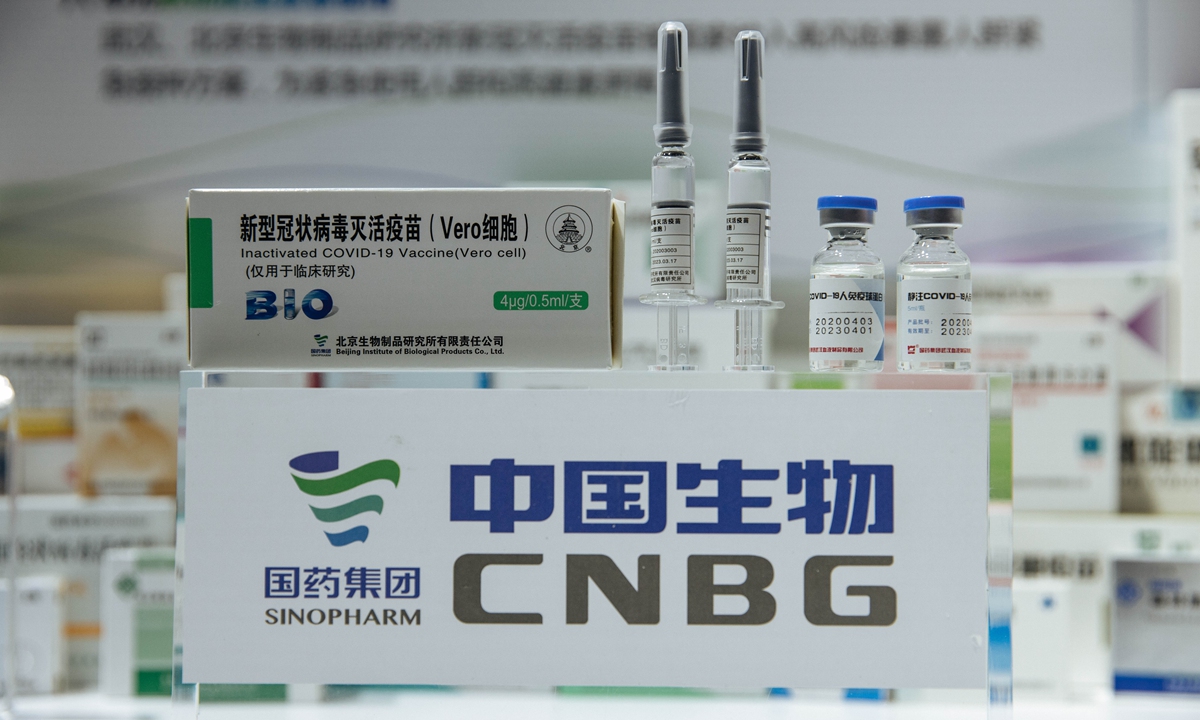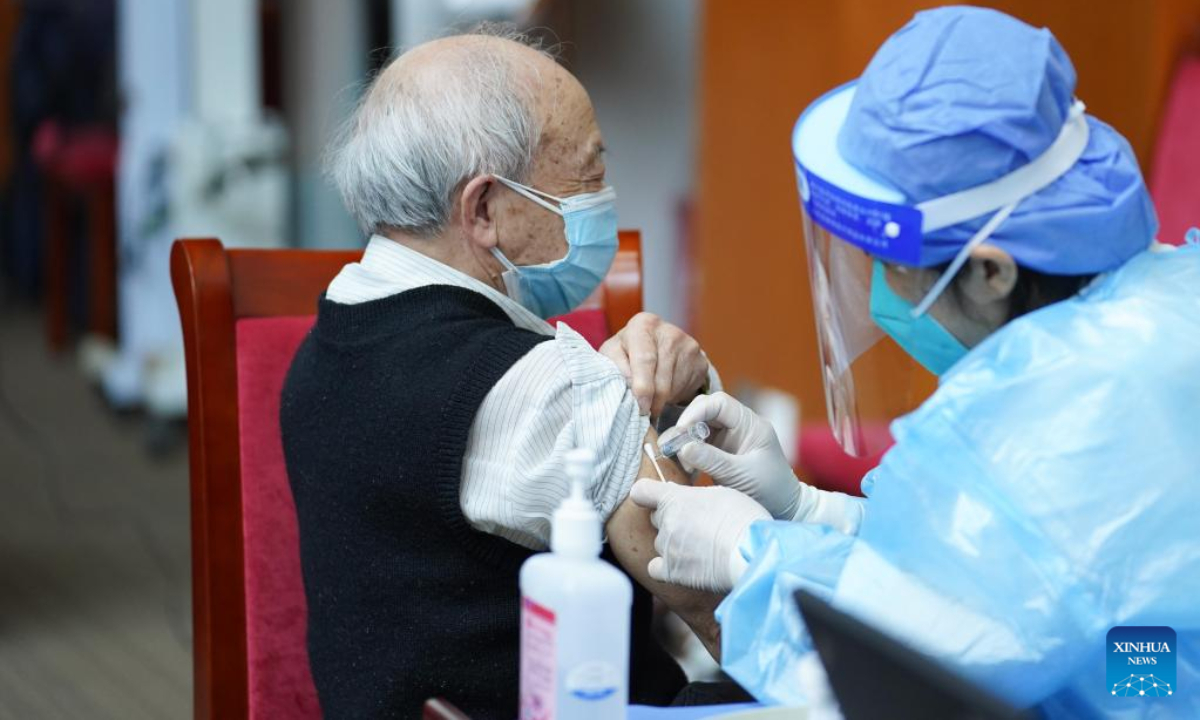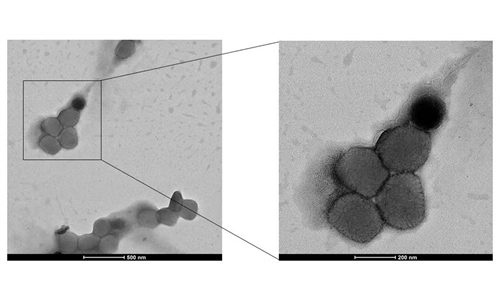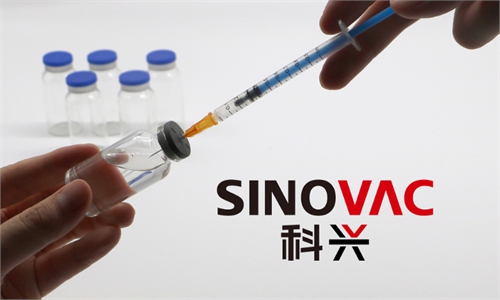Exclusive: Strong immunity and safety for the elderly – CNBG reveals key data from clinical research of COVID-19 vaccination in seniors

Photo:Li Hao/GT
The clinical trials data related to the vaccination of the CNBG's inactivated COVID-19 doses in high-risk groups in China showed that the vaccine offers strong immunogenicity and safety to the elderly, can effectively prevent severe illness and death, and is safe in combined inoculation with influenza and pneumonia vaccines, the Global Times learned exclusively from the China National Biotec Group (CNBG) under Chinese state-owned Sinopharm on Saturday.
Strengthening the immunization of the whole population, especially the elderly, is considered a top priority as the country moves to the next stage of epidemic prevention and control. In an interview with the Global Times, an individual responsible for vaccination from the CNBG revealed in details of the relevant clinical research data on the vaccination of inactivated COVID-19 vaccine in high-risk groups, including the elderly.
Statistics released by the National Health Commission in March showed that about 65 percent of severe COVID-19 patients are over 60 years old. Among the severely ill patients aged over 60, 80 percent have underlying diseases. Among the elderly who were categorized as severe cases, 65 percent had not been vaccinated.
Wang Fusheng, an academician at the Chinese Academy of Sciences, said at a press conference in July that for those over 60 years old who had completed full vaccination or received booster shots, the risk of the disease developing from mild to normal was 73 percent and 82 percent respectively lower than those who had not been vaccinated. The risk of the disease developing from normal to severe disease was 89 percent and 95 percent respectively lower than those of unvaccinated.
In addition, data from a previous study in Hong Kong showed that the risk of death during the recent Omicron outbreak was 252 times higher in people over 60 than in people under 30.
However, the latest data showed that as of November 28, 65.8 percent of Chinese people over 80 had been fully vaccinated. Chinese health officials said in media interviews that some elderly had yet to receive any doses, partly because they have underlying diseases or they are incapacitated or semi-incapacitated thus they feel anxious about getting vaccinated.
Since it was included in the WHO emergency purchase list on May 7, 2021, the inactivated vaccine against COVID-19 developed by Sinopharm has been approved and registered for marketing or emergency use in 119 countries, regions and international organizations worldwide. To date, 3.4 billion doses have been used at home and abroad, and abundant clinical research data has been accumulated through large-scale use, further confirming the safety and efficacy of the vaccine.

A medical worker injects COVID-19 vaccine for a senior citizen in Dongcheng District of Beijing, capital of China, April 18, 2022. Photo:Xinhua
Large-scale tests on the protective efficacy of the inactivated vaccine developed by Sinopharm have been carried out overseas, and the results show that the vaccine is safe and effective. The protective effect after two doses of the vaccine was 79.34 percent. After seven months (213 days), the protective efficacy of the two doses still reached 63 percent, in line with WHO requirements (≥50%). On the basis of two doses, the protective efficacy of a booster dose after 6 months was 83.4 percent, an increase of 30 percent.
The protective effect was 79.85 percent in people over 60 years old, 96 percent in warding off severe cases, and 100 percent in avoiding deaths.
Most people over 60 years old have underlying diseases such as hypertension and diabetes. Inactivated vaccines show the best safety characteristics compared with other technical routes, the individual from CNBG said.
A clinical study, which was conducted in 1,440 elderly patients who are over 60 years old with hypertension and diabetes, 402 HIV carriers, 418 elderly patients with chronic bronchitis/chronic obstructive pulmonary disease, and 613 hemodialysis patients, showed that the inactivated vaccine had good immunogenicity and safety.
In order to cooperate with WHO-EUL and EU certification, the CNBG has carried out real world research dispatching 11 technicians to 13 countries. After repeated communication with foreign drug regulatory authorities, the CNBG has obtained real world reports from seven countries and been recognized by WHO.
The WHO has approved the usage of a COVID-19 vaccine developed by the CNGB for people aged 60 and above, proving the vaccine's safety and efficacy for people aged 18 and above, the company announced on Saturday.
Data from real world studies in Argentina, Hungary, Morocco, UAE, Peru, Argentina, amongst other countries revealed good protection against severe illness and death after 2 doses of the vaccine, especially in people over 60 years old.
For example, in Argentina, the results of a real-world study on the prevention of death among people over 60 years old showed that the overall death protection rate was 84 percent after administering two doses, including 80.2 percent for those between 60 and 69 years old, 88.3 percent for those between 70 and 79 years old and 77.6 percent for those over 80 years old.
In addition, a clinical study was carried out on the combined vaccination of COVID-19 vaccine with influenza and pneumonia in people over 18 years old in China. The results showed that there was low interference between the three types of vaccines given at the same time, and no significant difference in immunogenicity between the two experimental groups.
The individual from CNBG suggested that the guidelines for COVID-19 vaccination should clarify that the whole population can be vaccinated, especially those over 60 years old, including those with underlying diseases. Moreover, priority should be given to the inactivated vaccine to ensure the safety of this population.
People over the age of 60, especially those suffering from underlying diseases, should be our priority groups to protect, the individual said, adding that the establishment of an immune barrier for this key group can effectively avoid the potential rush of medical resources after the adjustment of the prevention and control policy and ensure a smooth transition of China's epidemic prevention and control policy.


